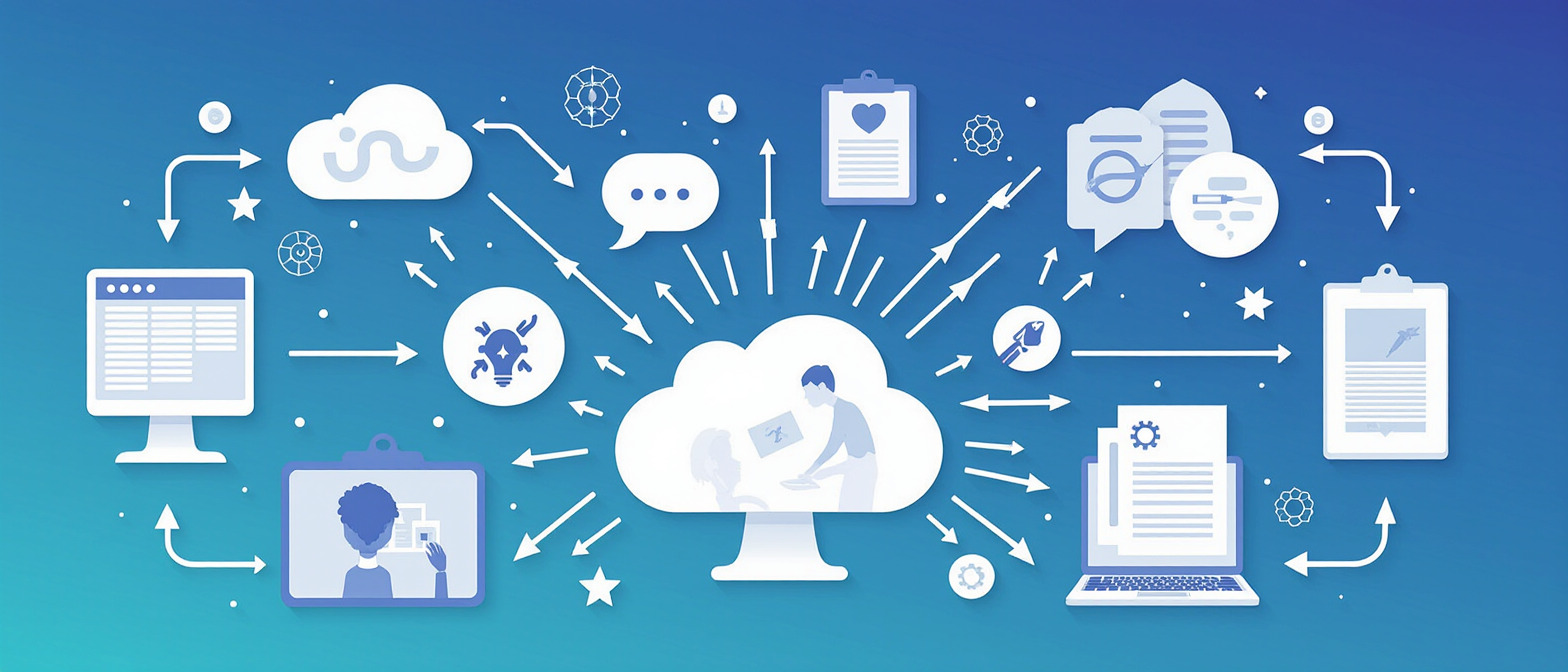AI-Powered Knowledge Transfer: Solving One of Outsourcing’s Biggest Challenges
- 1 min read
Discover how AI-powered knowledge transfer minimizes project delays, boosts collaboration, and ensures seamless handovers in IT outsourcing.

Introduction
In the world of IT outsourcing, one of the most persistent challenges has always been knowledge transfer. Whether onboarding a new vendor, transitioning between project teams, or scaling operations, valuable insights are often lost in translation. This gap leads to inefficiencies, missed deadlines, and costly rework, all due to the fragile nature of human-dependent knowledge sharing.
At Euro IT Sourcing, we understand that sustainable outsourcing partnerships rely on efficient and structured knowledge retention and transition. That’s why AI-powered knowledge transfer has become a cornerstone of modern outsourcing, offering automation, precision, and reliability in preserving institutional knowledge.
By integrating AI-driven tools, companies can now document, analyze, and share knowledge seamlessly across teams and time zones, ensuring business continuity even during workforce transitions.

Why Knowledge Transfer is a Persistent Outsourcing Challenge
Outsourcing relationships often evolve across multiple stakeholders, projects, and geographic boundaries. As teams shift or expand, crucial technical and business insights can easily slip through the cracks.
Some common pain points include:
- Manual documentation that quickly becomes outdated
- Employee turnover disrupting project continuity
- Unclear communication between client and vendor teams
- Inconsistent onboarding for new engineers or external specialists
Without a systematic approach, these issues can lead to loss of project momentum, repeated mistakes, and increased delivery costs.
A 2023 Gartner report emphasizes that nearly 70% of outsourcing project delays are linked to inefficient knowledge transfer practices, proving that this issue is not just operational, but strategic.
(Source: Gartner Research)
How AI Revolutionizes Knowledge Transfer in Outsourcing
1. Automated Documentation and Context Capture
AI tools can record team discussions, summarize code changes, and generate detailed handover notes. This ensures no information is lost when roles or vendors change.
2. Intelligent Knowledge Mapping
Machine learning algorithms identify critical dependencies, subject-matter experts, and project interrelations, creating a living knowledge map that’s easy to update and reference.
3. Real-Time Query and Learning Assistants
AI chatbots or copilots can instantly answer technical questions, reducing onboarding time for new developers or external teams.
4. Predictive Insights for Project Continuity
By analyzing communication and delivery data, AI can flag potential knowledge gaps before they affect delivery timelines.
These capabilities ensure that every project handover, whether between internal teams or external vendors, becomes faster, smoother, and more transparent.
For a deep dive into secure knowledge management principles, refer to the ISO/IEC 20000-1:2018 IT Service Management Standard.
(Read more at ISO.org)
Metrics & Outcomes: The Impact of AI Knowledge Transfer
Companies implementing AI-supported knowledge transfer report measurable improvements:
- Up to 40% faster onboarding of outsourced teams
- 30% reduction in project downtime during handovers
- 25% improvement in client-vendor collaboration efficiency
- Higher compliance with documentation and auditing requirements
These outcomes translate directly into reduced operational risks and greater ROI from outsourcing partnerships.
Risks & Mitigations
Risk → Overreliance on AI-generated documentation
Mitigation → Combine AI output with periodic human validation for context accuracy.
Risk → Data privacy concerns during AI-driven analysis
Mitigation → Implement strict access control and anonymization protocols.
Risk → Integration complexity with existing systems
Mitigation → Adopt modular AI tools that align with current IT ecosystems.
Key Takeaways
- AI-powered knowledge transfer ensures consistent, secure, and scalable project handovers.
- It helps retain critical expertise even when teams or vendors change.
- Companies see faster onboarding, fewer disruptions, and stronger partnerships.
- When combined with human oversight, AI-driven systems create a sustainable model for continuous knowledge growth.
- Euro IT Sourcing leverages these technologies to help partners build resilient, future-ready outsourcing ecosystems.
Author: Matt Borekci
Contact Us: Euro IT Sourcing

Breaking Down Software Product Costs Through Outsourcing: A Smarter Investment?
Outsourcing software development is a cost-effective strategy that optimizes expenses across various project phases. While in-house development comes with high labor, infrastructure, and overhead costs, outsourcing reduces expenses through global talent access, scalability, and faster time-to-market. Different outsourcing models—staff augmentation, dedicated teams, and full outsourcing—offer varying levels of cost savings and flexibility. However, businesses must navigate potential hidden costs, such as communication barriers and quality control issues. When managed strategically, outsourcing not only cuts costs but also enhances efficiency and accelerates innovation.

Common Pitfalls in IT Outsourcing (and How to Avoid Them)
Discover the most common pitfalls in IT outsourcing and learn effective strategies to avoid them. This guide helps businesses optimize outsourcing partnerships and minimize risks.